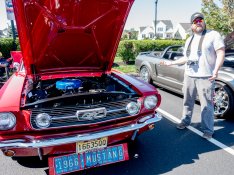Does it really matter whether 50 ASA 35mm film has or doesn't have higher resolving power than a 45MP digital sensor. Is that what is important?
Agree, but one should not deny the fact.
Then again, this is relative to the size of the film.
Large-format film still out-resolves digital, because the amount of silver-particles (or dyes) representing the same subject, will me much greater than for example 35mm, and also a typical 20-30 megapixel sensor.
However:
It may be my scanning-technique, but compared to my 5D mk III, taken with equivalent focal lengths at around f8-f10, my Canon 5D mk III with a 24-105 F4 L, has much more (fine) detail than shots taken with my Hasselblad and 80 f2.8, Rolleiflex 2.8F and my Mamiya RZ 67 Pro II with the 110 f2.8 and Fujipro 160ns.
In a typical head-to-toe shot, I can see skin-pores, lashes, stray-hairs, fabric-structure etc that will be blurred or lacking detail on film, taken with these excellent analog cameras.
I would be very interested to drum-scan some of my negatives to see if this is really the case, or if my scanner is near garbage (Epson v750).
Still, I only pixel-peep on digital, due to the type of processing I do....I normally look at the shot as a whole, to see if it is junk or gold......so in that respect, resolution, digital or analog, mean jack squat, as long as I can print them in 30cm *40cm if I need to.




